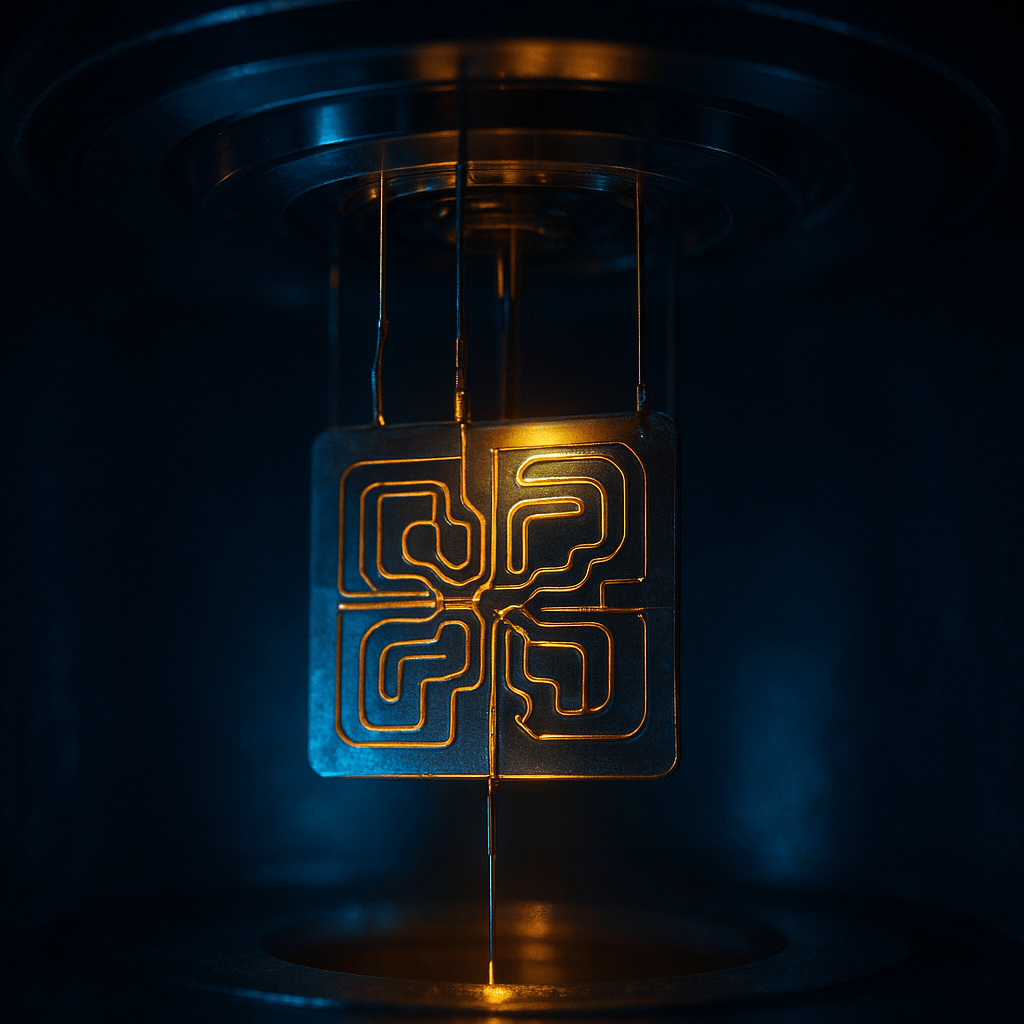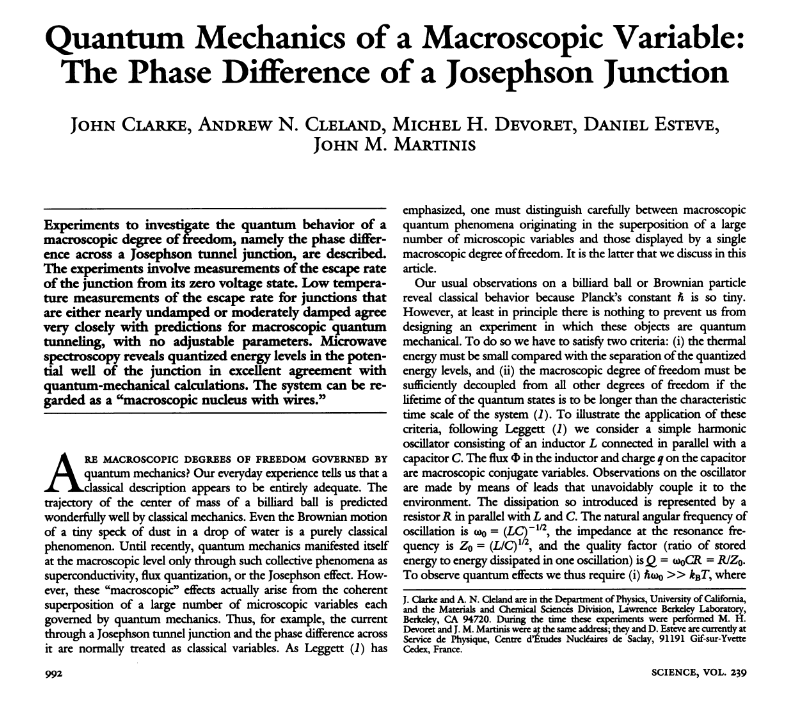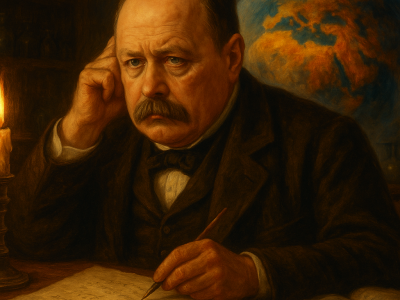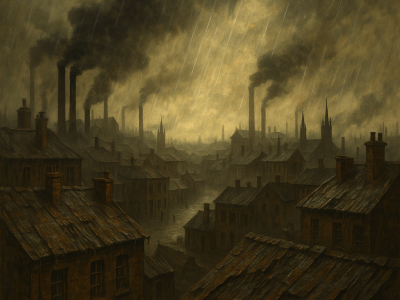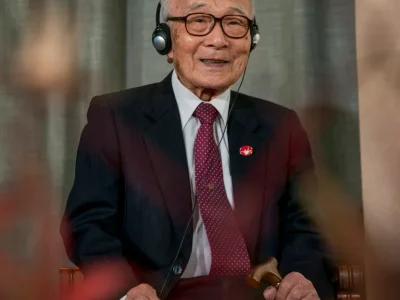Imagine throwing a tennis ball at a wall. You expect it to bounce back, every single time. But what if, occasionally, the ball vanished, only to reappear on the other side of the wall, unscathed and smugly defying logic?
That improbable trick is the essence of quantum tunnelling, one of the strangest phenomena in physics. Until the late 20th century, such behaviour seemed confined to the invisible world of atoms and electrons. Yet in a modest laboratory at the University of California, Berkeley, a group of physicists dared to ask a radical question: Could the same quantum effects appear in something you can actually hold in your hand?
Four decades later, that question has earned John Clarke (University of California, Berkeley), Michel H. Devoret (Yale University and University of California Santa Barbara), and John M. Martinis (University of California, Santa Barbara) the 2025 Nobel Prize in Physics. Their groundbreaking experiments revealed that quantum mechanics, i.e., the theory that governs the microscopic, can manifest vividly in the macroscopic world.
The Royal Swedish Academy of Sciences honoured them “for the discovery of macroscopic quantum mechanical tunnelling and energy quantisation in an electric circuit.” Their achievement bridged the gulf between the atomic and the tangible, proving that even circuits visible to the naked eye can behave like giant quantum particles.
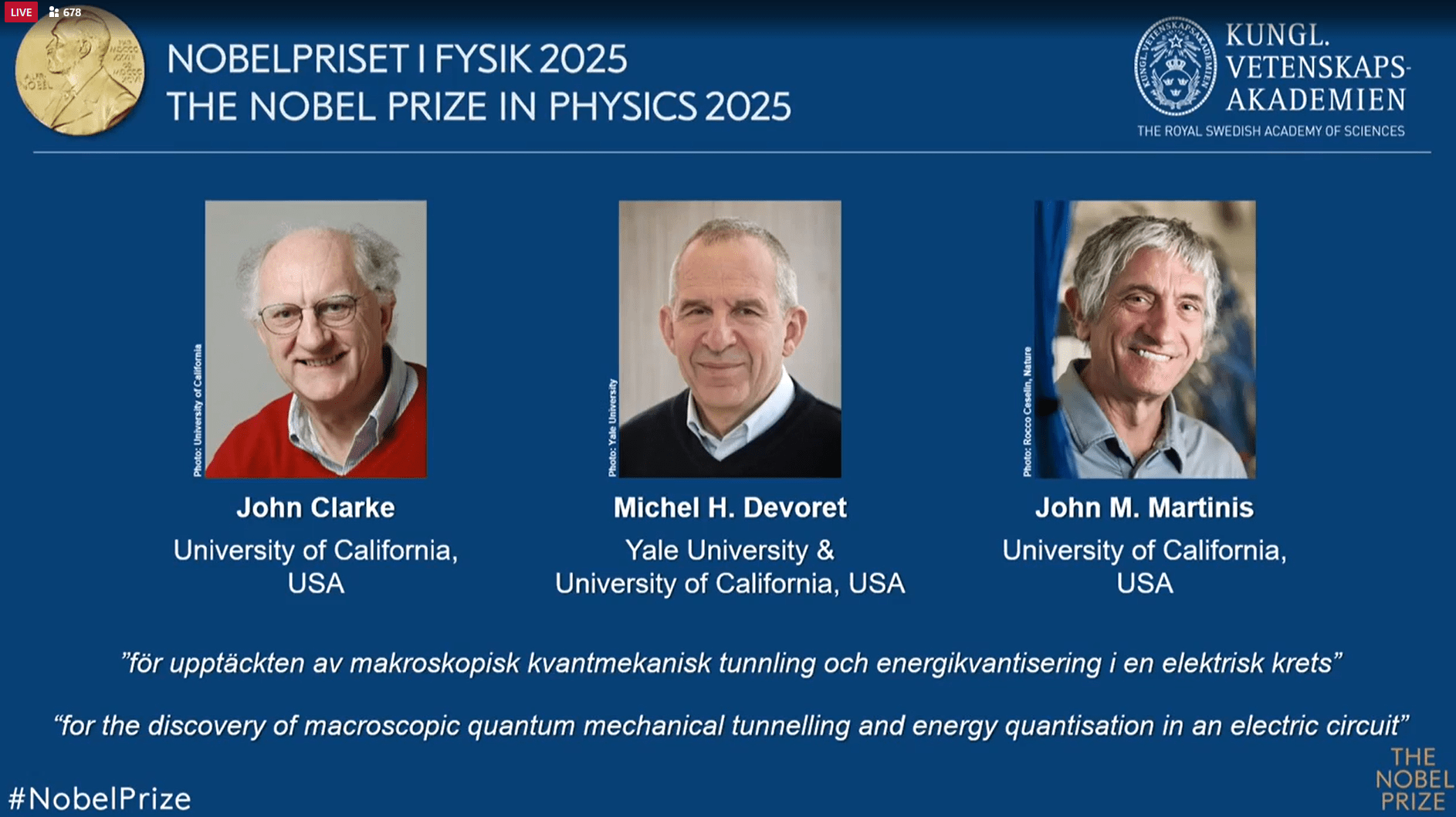
Quantum mechanics meets the real world
Quantum mechanics describes a realm where particles can be in two places at once, tunnel through barriers, or exist in states that blur the lines between opposites. Such effects are normally microscopic, observable only at atomic scales. Everyday objects, composed of countless atoms, do not display these behaviours because quantum effects usually cancel out when large numbers of particles interact.
Clarke, Devoret and Martinis shattered that divide. In 1984 and 1985, their team at UC Berkeley demonstrated that an electrical circuit made from superconductors could behave as a single quantum entity. The circuit, small enough to fit on a fingertip, could “tunnel” between two states, creating a measurable voltage in the process. It also absorbed and emitted energy in precise, quantised amounts,a hallmark of quantum mechanics.
This discovery was more than a laboratory curiosity. It showed that quantum coherence, the delicate alignment of many particles acting as one, could survive even in systems large enough to be engineered, measured, and potentially used.
In other words, quantum behaviour was no longer confined to the atomic world. It had entered the world of circuits, wires and oscilloscopes.
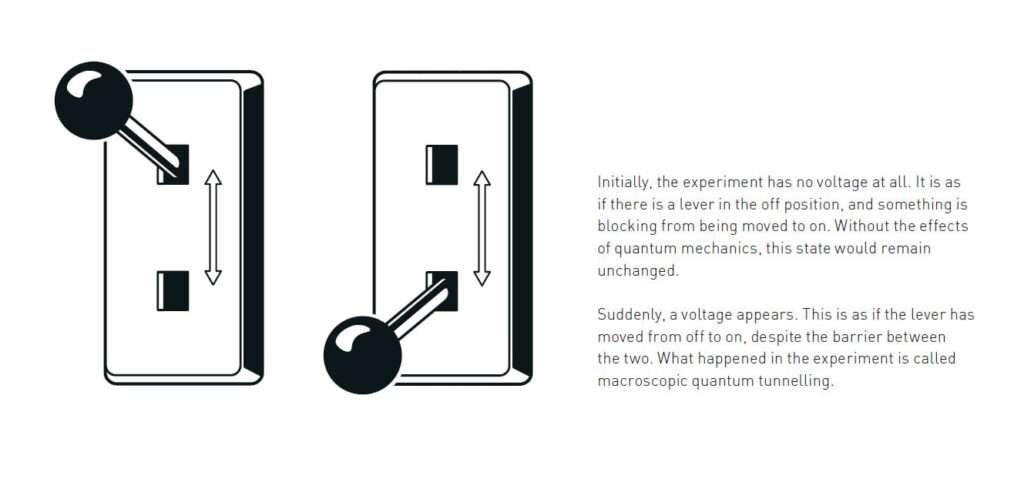
From microscopic particles to macroscopic systems
To appreciate the scale of this achievement, it helps to understand what tunnelling means. In classical physics, an object trapped in a potential well like a marble in a bowl, cannot escape unless it gains enough energy to roll over the rim. In the quantum world, however, particles are described not as solid dots but as waves of probability. There is always a small chance that a particle will “leak” through a barrier, appearing on the other side without ever climbing over it.
This bizarre escape act is called quantum tunnelling. It explains natural phenomena such as radioactive decay, where parts of an atomic nucleus tunnel out, transforming one element into another.
For decades, physicists wondered whether such tunnelling could ever occur in a system made of billions of particles acting together. Clarke, Devoret and Martinis found their answer in superconductivity, a state of matter where electrons pair up and move through a material without resistance.
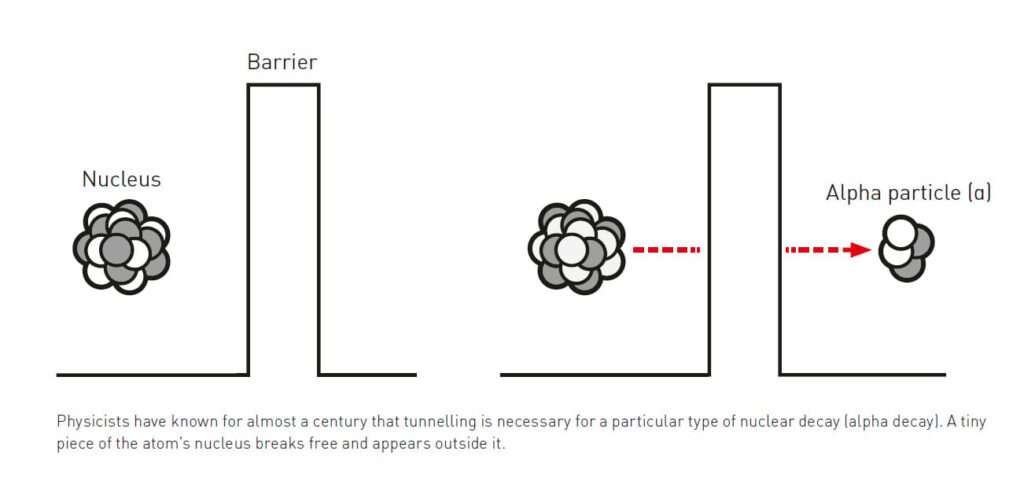
Superconductors and the dance of Cooper pairs
At temperatures near absolute zero, some materials become superconductors. Their electrons form tightly bound pairs known as Cooper pairs, named after physicist Leon Cooper. These pairs do not behave like individual particles but as a single, collective wave function, a unified quantum system that extends across the entire material.
When two superconductors are separated by a thin insulating barrier, they form a Josephson junction, named after Brian Josephson, who predicted in 1962 that quantum effects would allow current to pass through the barrier without any voltage. The phenomenon, confirmed experimentally, earned Josephson the 1973 Nobel Prize in Physics.
Building on that foundation, Clarke, Devoret and Martinis constructed a Josephson junction circuit and cooled it to near-zero temperatures. Within this setup, all the Cooper pairs in the superconducting material moved in synchrony, behaving like one giant quantum particle. The researchers could then study whether this macroscopic particle could tunnel between different energy states, a feat never before demonstrated.
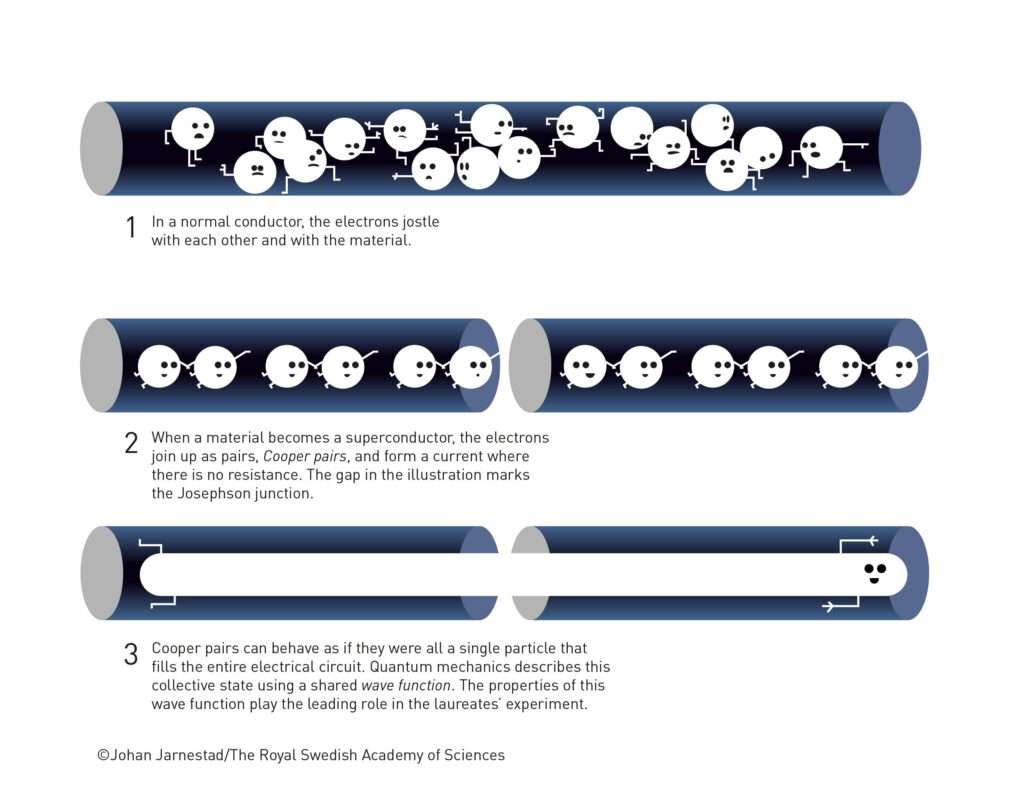
When the circuit tunnels
In their experiments, the team introduced a weak electrical current into the Josephson junction and measured the resulting voltage. Initially, the circuit showed no voltage at all, as if it were stuck in an “off” state. In classical physics, it should have remained there indefinitely trapped by an energy barrier.
Then, seemingly without cause, a voltage appeared. The system had “tunnelled” from its zero-voltage state to a state with measurable current flow. In essence, the entire superconducting circuit had passed through an energy barrier, not as individual electrons but as one coherent quantum entity.
By repeating the measurements thousands of times, the scientists gathered statistical data on how long the circuit remained in its initial state before tunnelling occurred, much like nuclear physicists studying the half-life of radioactive decay.
The results were unmistakable: a macroscopic electrical circuit could indeed undergo quantum tunnelling.
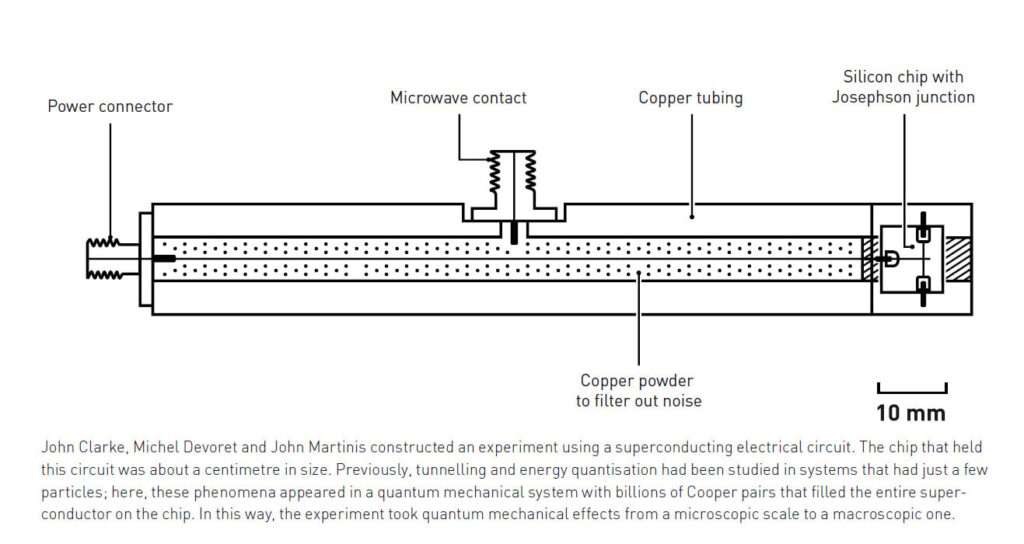
Quantised energy, the fingerprint of the quantum world
The team’s second major finding was energy quantisation. They discovered that their superconducting circuit did not absorb or emit energy continuously, but only in discrete steps. When they bombarded the system with microwaves, only specific frequencies caused it to jump between energy levels.
This confirmed that the circuit behaved like an artificial atom, a larger version of the microscopic systems that had inspired quantum theory a century earlier. The observation provided striking evidence that macroscopic systems can exhibit quantum properties identical to those of single particles.
For physicists, it was as if someone had built an atom large enough to connect to a power supply.
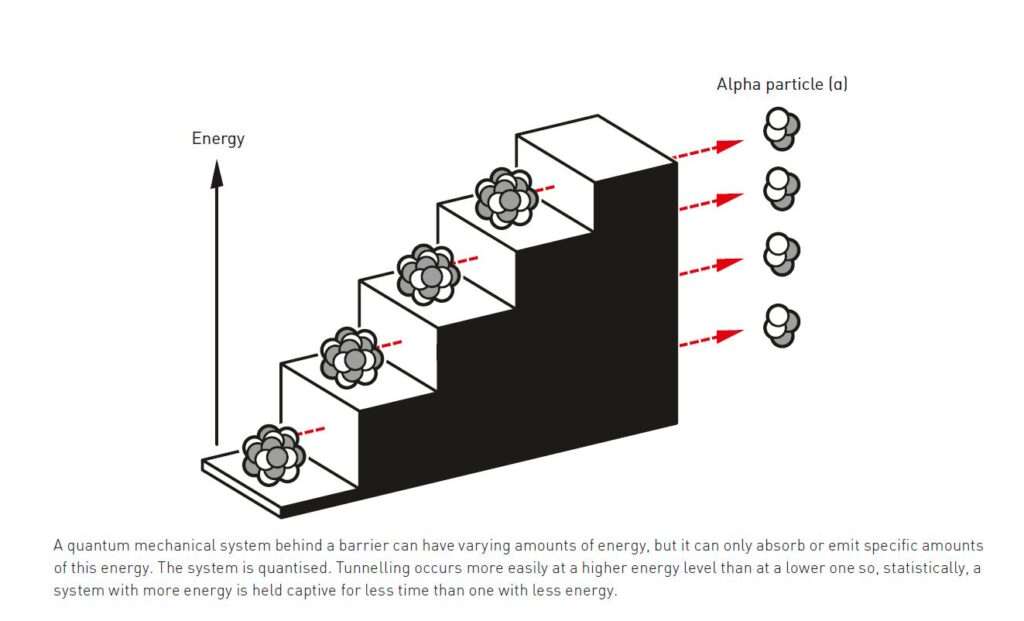
Standing on the shoulders of giants
The laureates’ achievement did not emerge in isolation. Their work stands on the shoulders of a long line of quantum pioneers.
In 1928, the physicist George Gamow first described tunnelling to explain why certain heavy atomic nuclei spontaneously decay, emitting alpha particles. Later, scientists like Leon Cooper, John Bardeen and Robert Schrieffer formulated the theory of superconductivity, explaining how electrons pair up and move without resistance, work that earned them the 1972 Nobel Prize.
In the 1970s, Anthony Leggett extended these ideas to the macroscopic scale, suggesting that under the right conditions, quantum tunnelling could occur in superconducting circuits. His theoretical contributions, later recognised with the 2003 Nobel Prize in Physics, provided the intellectual foundation for the experiments Clarke, Devoret and Martinis would perform a decade later.
The 2025 Nobel Prize therefore completes a remarkable intellectual arc, from theory to demonstration, from the subatomic to the circuit board.
Schrödinger’s cat comes to life
The laureates’ experiments also touch upon one of the most famous thought experiments in science: Schrödinger’s cat. Proposed by Austrian physicist Erwin Schrödinger in 1935, it imagines a cat sealed in a box with a radioactive atom. According to quantum rules, until the box is opened, the cat is both alive and dead, a metaphor for the strange superpositions that exist in the quantum world.
Clarke, Devoret and Martinis’ circuit is not a cat, of course, but it behaves like one in spirit. Their macroscopic system, made of billions of Cooper pairs, can exist in superposed quantum states, tunnelling from one to another unpredictably.
As Leggett later remarked, their experiment brought Schrödinger’s paradox one step closer to reality. It demonstrated that quantum phenomena can extend far beyond atoms, into systems we can fabricate, measure, and perhaps one day use to compute.

From fundamental discovery to quantum computing
What began as a quest to test the limits of quantum mechanics has become the foundation of an emerging technological revolution.
In the decades following their pioneering experiments, John Martinis went on to design circuits that harnessed these quantised energy levels to represent bits of information, the zeros and ones of quantum computing. The lowest energy state became “0” and the first excited state became “1”, forming a qubit, the basic unit of quantum information.
Superconducting qubits, based on precisely the same principles demonstrated in the 1980s, now power some of the world’s leading quantum computers. Technology companies and research institutions from Google to IBM have adopted similar architectures to build machines capable of solving problems that would take classical computers millennia.
Thus, what started as an exploration of quantum strangeness has become a cornerstone of quantum technology, from secure communication systems to advanced simulations of chemical and physical processes.
The artificial atom: New frontiers in research
Beyond computation, the laureates’ discovery has opened doors to new kinds of experiments. Their superconducting circuits function like artificial atoms that can be tuned, connected, and controlled in ways that natural atoms cannot.
Such systems allow physicists to simulate complex quantum behaviours, test theories of decoherence (how quantum states lose their purity), and probe the boundary between quantum and classical worlds.
As Michel Devoret’s later work at Yale University demonstrated, these circuits can also serve as building blocks for hybrid systems combining photons, spins, and superconducting materials, a versatile platform for both fundamental and applied research.
These advances underscore the broader impact of the 2025 Nobel Prize: it celebrates not just a discovery, but a framework that continues to expand the horizons of quantum science.
The wall, the ball and the quantum truth
When you throw a ball at a wall, it bounces back. In our everyday world, the rules seem absolute. But deep down, in the quiet circuits of a cryogenic chamber, reality is far stranger and far more beautiful.
Thanks to Clarke, Devoret and Martinis, we now know that even the solid walls of classical physics can, on occasion, be quietly passed through. Their work reminds us that the boundary between the known and the unknown is never fixed; it is a barrier waiting to be tunnelled through.
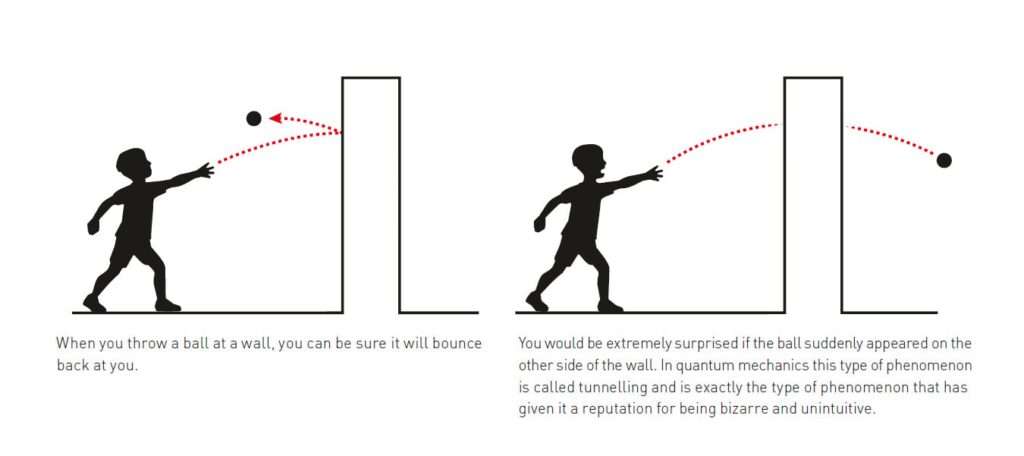
Profiles of the laureates
John Clarke, born 1942 in Cambridge, UK. PhD 1968 from University of Cambridge, UK. Professor at University of California, Berkeley, USA.
Michel H. Devoret, born 1953 in Paris, France. PhD 1982 from Paris-Sud University, France. Professor at Yale University, New Haven, CT and University of California, Santa Barbara, USA.
John M. Martinis, born 1958. PhD 1987 from University of California, Berkeley, USA. Professor at University of California, Santa Barbara, USA.
Prize Amount: 11 million Swedish kronor (~1.2 millon USD), to be shared equally between the laureates.
References
Press release. NobelPrize.org. Nobel Prize Outreach 2025. Tue. 7 Oct 2025. https://www.nobelprize.org/prizes/physics/2025/press-release/

